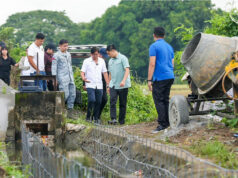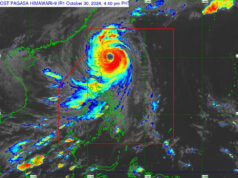THE Bureau of Customs (BoC) said it confiscated toxic substances, hazardous and nuclear waste valued at P24 million since the establishment of a special unit focusing on the problem in August.
In a statement late Wednesday, the BoC said the seizures were carried out on 10 occasions by the new unit, which is known as the Environmental Protection and Compliance Division (EPCD).
The latest operation involved refrigerant chemicals from China valued at P4 million at the Manila International Container Port (MICP) on Oct. 7. The shipment lacked permits to legally import the goods.
The ten seizures each featured violations of the Customs Modernization and Tariff Act as well as a directive on the handling of regulated items, known as Customs Memorandum Order (CMO) 9-2015, it said.
“To date, the division has on record 10 apprehensions on violations of RA 10863 also known as the Customs Modernization and Tariff Act (CMTA) and CMO 9-2015, ‘On the Strict Enforcement of Rules Concerning Regulated Imports’ in relation to RA 6969 ‘Toxic Substances and Hazardous and Nuclear Wastes.’ The apprehensions were estimated to be worth at least P24,741,349.91 pesos,” the BoC said.
EPCD monitors the import and export of hazardous, recyclable and other materials requiring environmental permits.
RA 6969 requires the government to regulate and restrict imports of chemical substances that pose a risk to health or the environment, and prohibit the entry of hazardous and nuclear waste.
Separately, the BoC launched its World Customs Organization (WCO) Cargo Targeting System (CTS) yesterday, aiming to boost trade efficiency and strengthen border security.
The Bureau will now require shipping lines to comply with timelines for the submission of manifests through the CTS, which allows foreign vessels and aircraft to transmit electronically the cargo information in advance.
CTS helps customs services perform “advanced profiling of shipments before they arrive at Philippine ports using the manifest data given, it said.
BoC launched the system after it completed pilot testing on Oct. 2. — Beatrice M. Laforga



